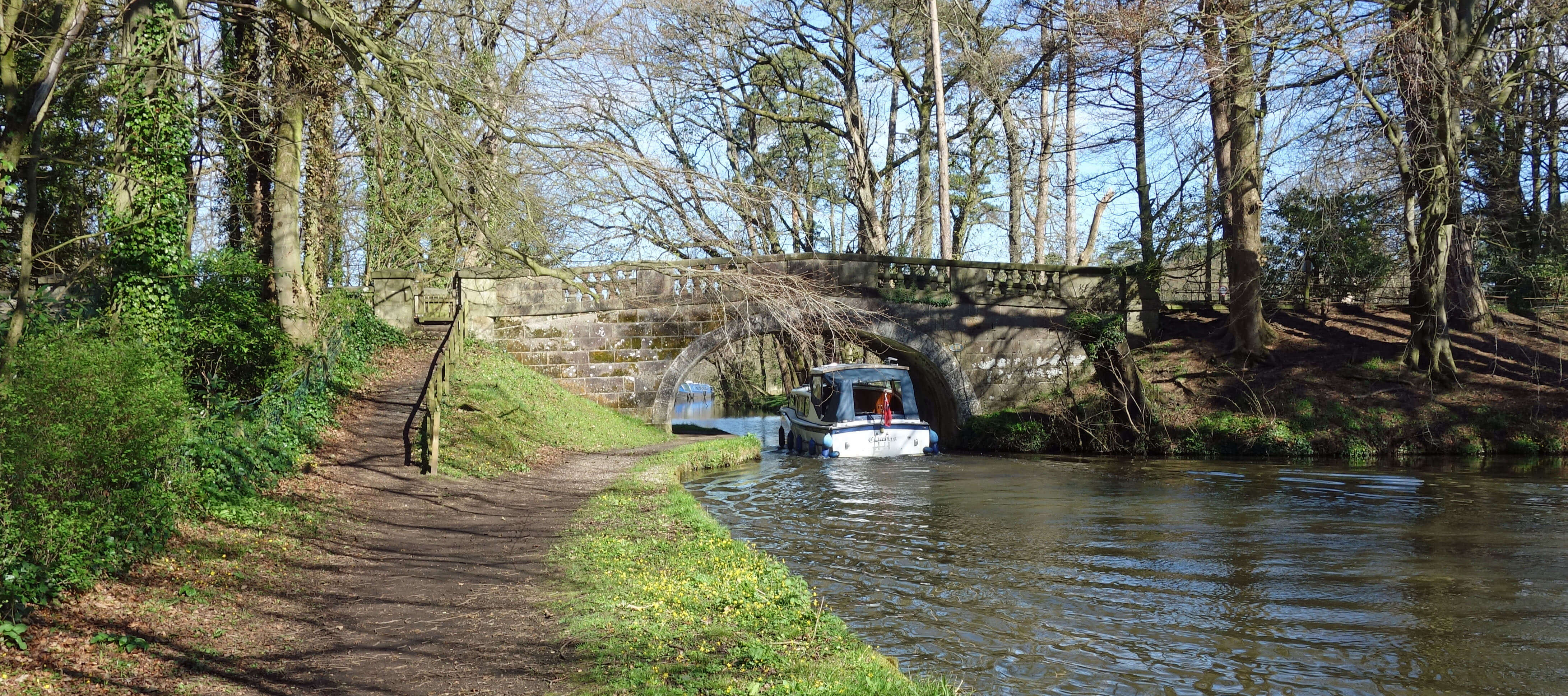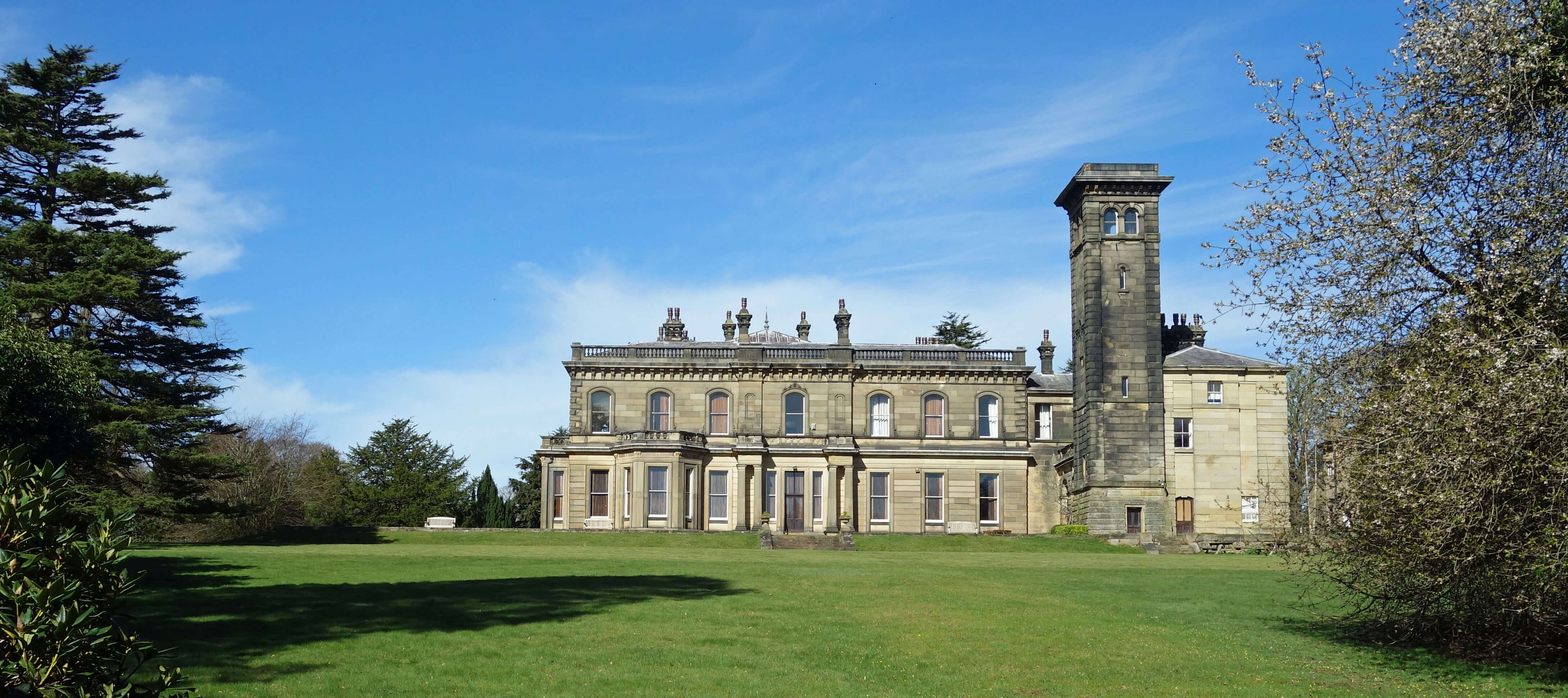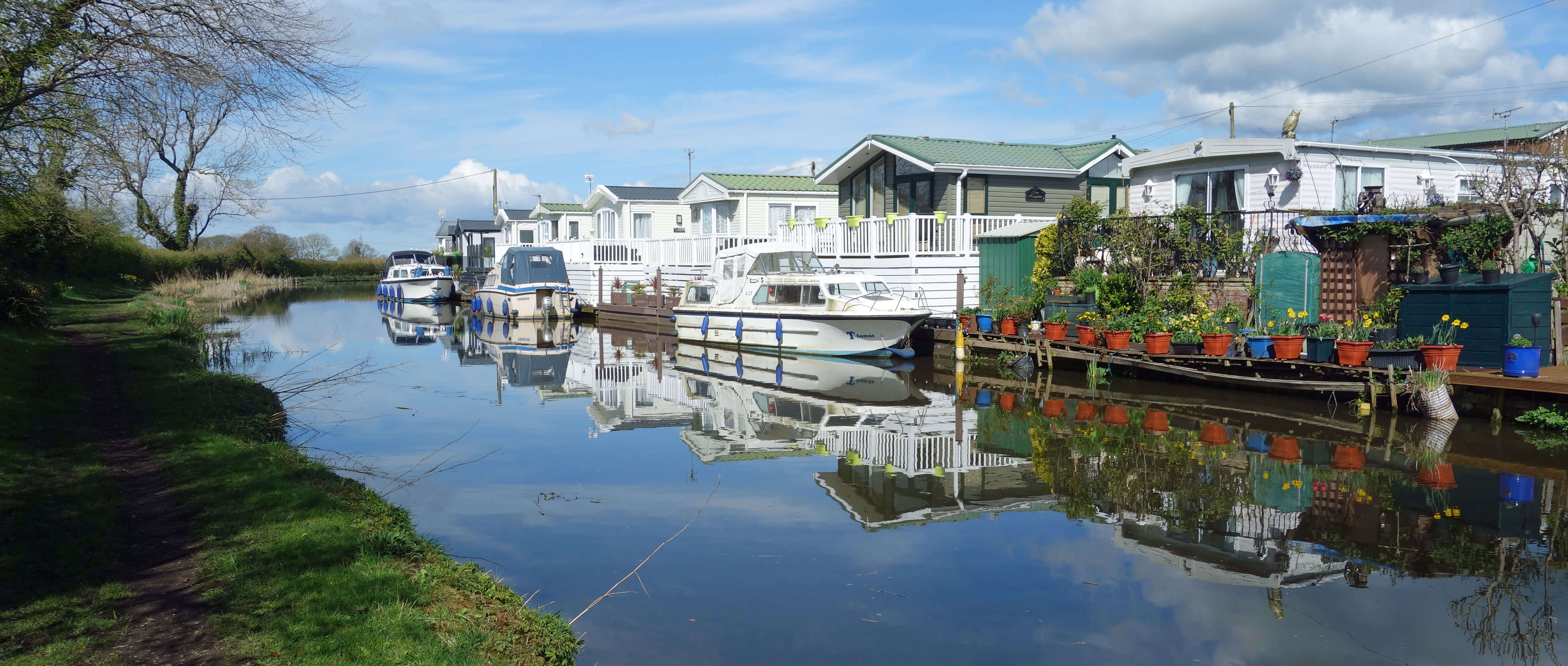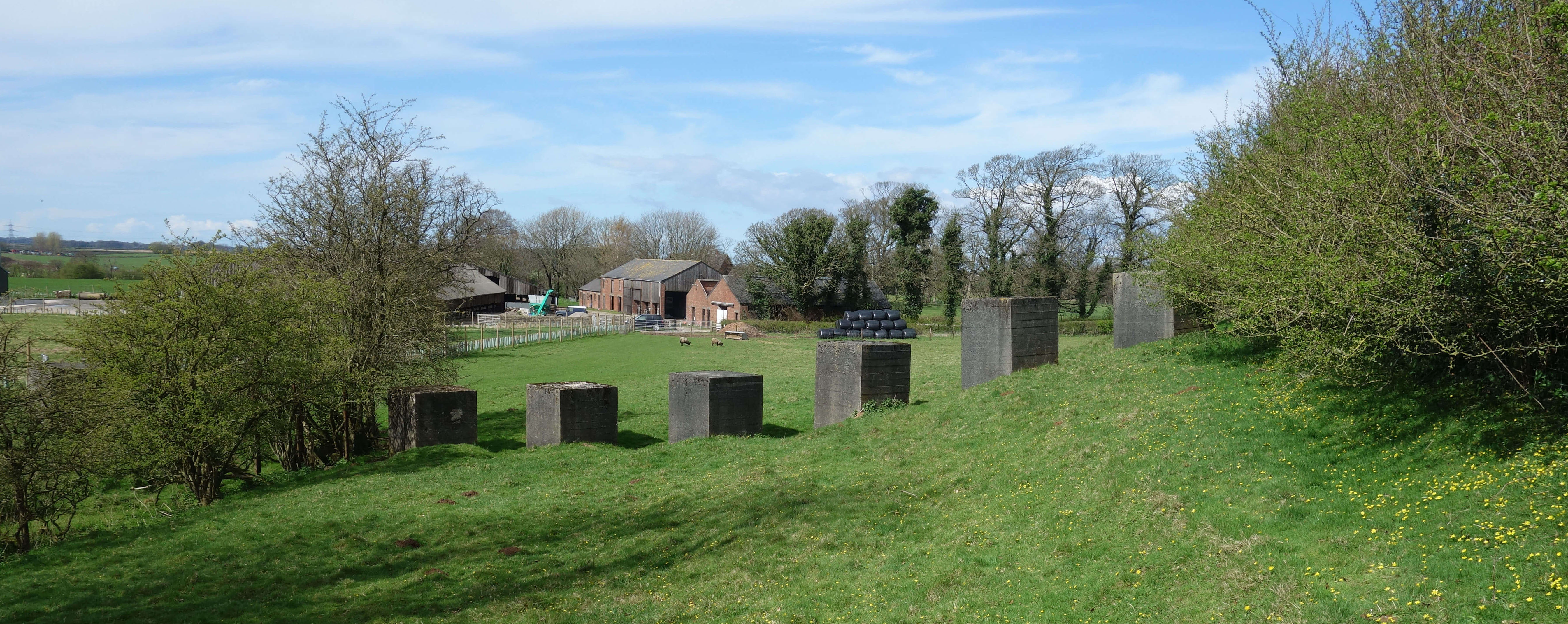

Home Preamble Index Areas Map References Me Drakkar

Galgate marina
I set off from Galgate marina, which, while not busy, was stirring itself into a spring awakening. Beyond the Glasson branch of the canal I passed under a bridge with balustrades unlike run-of-the-mill canal bridges. I assume that this bridge was built (or re-built) to provide an impressive entrance to Ellel Grange, a stately-looking structure that was built on the site of a centuries-old grange in 1857-59. It appears to be modelled on Queen Victoria’s Osborne House, with similar square towers with flat caps. It has become the home of Ellel Ministries, a now-international organisation that provides spiritual help for those who need it.

Left: Canal bridge near Ellel Grange; Right: Ellel Grange.
In 2021 there was a proposal to build a ‘holiday village’ including a 90-bedroom hotel and 450 lodges in fields surrounding Ellel Grange. The report says that the land was “once part of the famous Ellel Grange estate” but I don’t know who owns it now. I also don’t know if this proposal relates to, or is independent of, the proposal to re-design junction 33 of the M6 to relieve the traffic bottleneck through Galgate. If any of this comes to pass then this walk will become rather different.Pleasure “is always some sensation, and always triggered by an encounter, by something that confirms, from outside, the possibilities inscribed in our bodies. Pleasure is the encounter with the good object: the one that causes a possibility of feeling to blossom … In walking, you find these moments of pure pleasure, around encounters. The scent of blackberries or myrtle, the gentle warmth of an early summer sun, the freshness of a stream.”Yes, I was, I suppose, experiencing that sense of pleasure. It was not exactly bliss, however, for here the canal runs quite close to the noisy A6. In fact, within a kilometre to the east there are three more lines of transport, all heading north-south in parallel: the old coach road (which ran past the Hole of Ellel), the west coast railway line, and the M6 (the last two adding to the noise). However, once I had passed Potters Brook Bridge the canal swung west to become quieter.

Cartmels Bridge and Lancaster Canal, a scene typical of miles of the canal
Gros’s second state of well-being is joy, which he considers more demanding, more complete and more rich than pleasure. He says“Joy, unlike pleasure, increases with repetition, and is enriched. When you are walking, joy is a basso continuo … What dominates in walking … is the simple joy of feeling your body in the most primitively natural activity … When you walk, the basso continuo of joy comes from feeling the extent to which the body is made for this movement … Even apart from the action of walking, but compatible with it, there is also joy experienced as fullness, the joy of living.”From this description, it seems that I needed to walk more miles to experience joy. So I strode out, without much to detain me. I disturbed two herons and later came upon a group of eight swans, some of whom were nesting in reeds on the opposite bank. The canal became more open, with occasional views across to the Bowland hills but only rarely to the snow-capped Lakeland hills. Occasionally, the modern world intruded. I noticed that the parapets of Cockerham Road Bridge had been well and truly demolished, meaning that the bridge was closed for traffic although I could still walk under it.
 Right: Smithy Leisure Park at Winmarleigh Bridge
Right: Smithy Leisure Park at Winmarleigh Bridge
“Happiness involves finding oneself the recipient of a spectacle, a moment, an atmosphere, and taking, accepting and grasping the blessing of the moment. For that there can be no recipe, no preparation; one has to be there when the moment comes … Happiness is fragile precisely because it is not repeatable; opportunities for it are rare and random.”So if I saw a kingfisher then that might provoke happiness. Sadly, I didn’t see a kingfisher or much else out of the ordinary. Towpath-walking is not ideal for generating happiness, since there is little change for mile after mile. I am not surprised because Jimmy Ruffin had warned me that “happiness is just an illusion filled with sadness and confusion” (What becomes of the broken-hearted, 1966). On the other hand Ken Dodd was adamant that happiness was the greatest gift that he possessed (Happiness, 1964).
“Serenity comes from simply following the path. And then, while walking, serenity comes because all the hassles and dramas, all the things that gouge empty furrows in our lives and our bodies, become as if absolutely suspended, because out of range, too remote and incalculable. The wearisome grand passions and distasteful excitements of active lives, stressed to breaking point, are supplanted in the end by the implacable lassitude of walking: just walking.”Towpath-walking is in its element here. Just follow the path, the same path, for mile after mile. That’s all you have to do. However, serenity is not really what I seek on my walks, no more than I want ‘smooth classics’ on Classic FM. I prefer classical music to be unruly, edgy, emotional, turbulent and with highs and lows. There are no highs and lows with towpath-walking.
 Right: The concrete hexahedra near Nateby Hall
Right: The concrete hexahedra near Nateby Hall
Home Preamble Index Areas Map References Me Drakkar
© John Self, Drakkar Press, 2018-

Top photo: The western Howgills from Dillicar; Bottom photo: Blencathra from Great Mell Fell